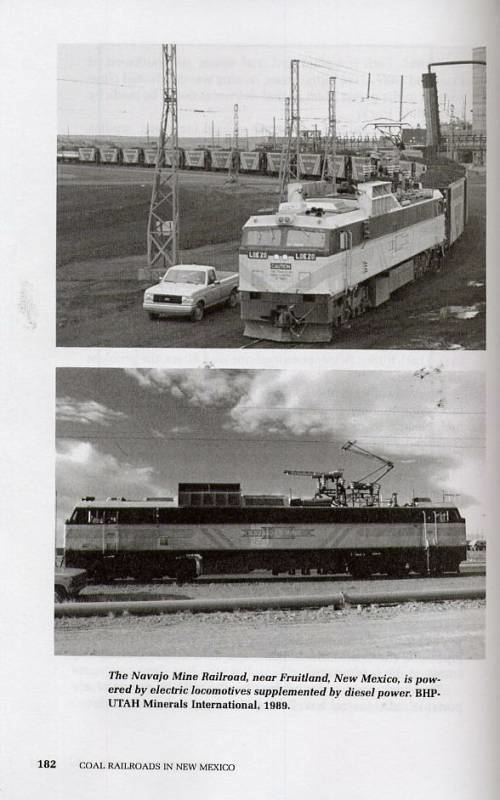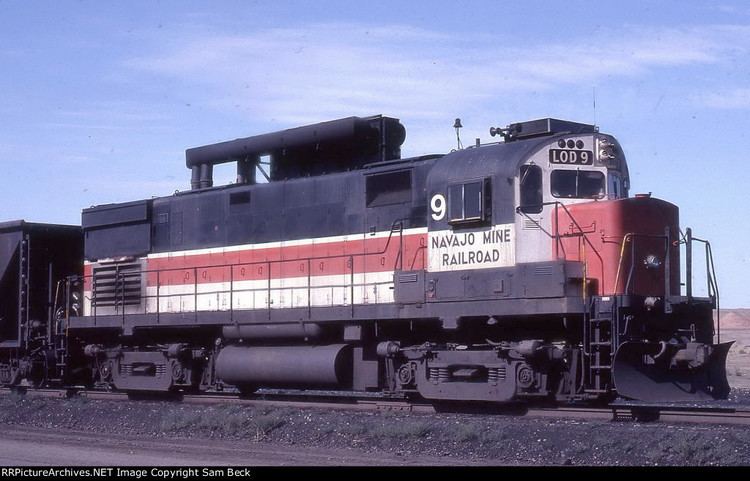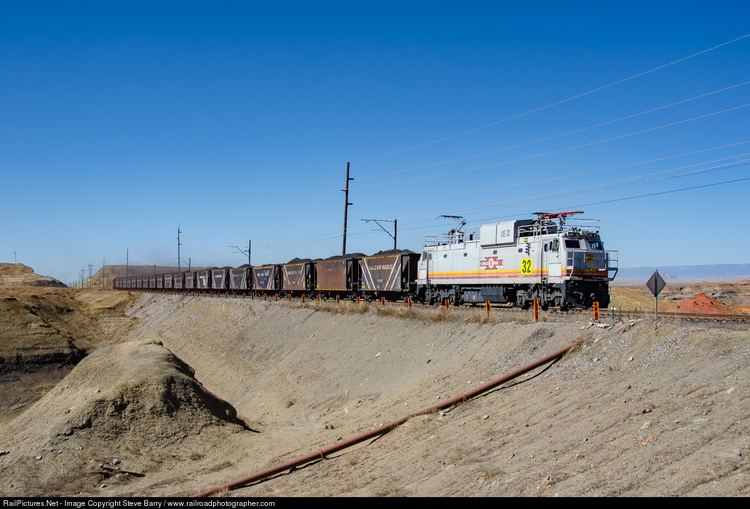Status Operating Operator(s) BHP Billiton | Opened 1974 | |
 | ||
Termini South Terminals:coal load outs in the Navajo MineNorth Terminal:Four Corners Generating Station Locale San Juan County, New Mexico | ||
The Navajo Mine Railroad (reporting mark TNMR) is an electrified private railroad operated by BHP Billiton in New Mexico, USA, within the Navajo Nation. It operates 13.8 miles (22.2 km) of track between the Four Corners Generating Station and BHP Billiton's Navajo Coal Mine. The railroad does not have any connection to the national rail network.
Contents

History

A 7 miles long standard gauge line was built in 1974 from the power plant to the Hosteen stockpile. The line was expanded to the present 14 miles in 1983. Since there is not connection to the rest of the railroad network, the 3 diesel locomotives and 22 Maxon bottom dump coal hopper cars had to be transported from Gallup on low-bed trucks to the Navajo Mine Railroad. At the beginning only one train was operated. There were problems with clogged oil bath filters on the diesel locomotives due to excessive coal dust, but the issues could be solved with a new filter type.

Electric operation started 1984 since it is more economic. Diesel operation became too expensive with the increasing trains loads and fuel prices. Furthermore another 20 hopper cars were purchased in order that two trains could be built, each having 18 cars.
Route

The line runs from the Navajo Mine north-northwest to the Four Corners Generating Station, which is located 25 miles west of Farmington, New Mexico. It has no connection to any other railroad.
Operation
The trains are operated with an electric locomotive E60 on the North end and a diesel locomotive ALCO Century 425, where this one acts normally as a dummy. It serves normally only as a control cab to for the radio remote controlled E60, when the empty train is heading back to the mine. The prime mover is still present to provide emergency power in case of an electricity outage. There are two trains in operation, theoretically a third train could be operated. Each train consist of 21 coal hoppers. Both trains make typically 12 round trips a day in a 24 hour operation. There is only one crew member at work, who takes an empty train to the coal load out, where he changes to the full train to drive it back to the power plant. While this train is underway, the other one gets loaded.
The catenary has a voltage of 25 kV 60 Hz AC. The pantographs of the E60s are mounted on top of pedestals on the roof to adapt their working height to the unusual high catenary position. Extra filters for cleaning the machine room air are mounted on the roof of the locomotive.
At the coal load outs the coal is loaded with front-end loaders in the hopper cars. Each car has a capacity between 100 and 125 tons.
